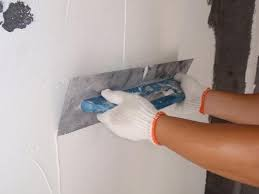To maintain the beauty of your interior walls, you should follow a few simple steps. First, wipe away the dirt and grime with a sponge. Make sure the sponge is damp but not dripping wet, and wipe the wall in circular motions. This way, you’ll have the most time to scrub off any spots you missed. Next, you can use a disinfectant wipe on any stains that are especially stubborn.

Whether you have painted the walls or have wallpaper, it’s important to maintain them to retain their appearance. Washing off cobwebs, dust, and dirt with a mild soap and water mixture is a good idea. Also, check for mold before you start painting them. Use a vacuum cleaner to remove larger debris and cobwebs. Keeping walls clean will prevent them from fading or scuffing with dirt.
Once you’ve cleaned the surface, you can use a non-abrasive all-purpose cleaner to remove stubborn stains. For oil-based paint, you should avoid harsh scrubbing. A soft sponge soaked in water can also remove dirt and marks from the walls. For stubborn stains, you can use baking soda or white vinegar mixed with water. If this doesn’t work, you might want to contact a professional for this job.
One of the easiest ways to care for your painted walls is to avoid fingerprints and other marks. If you don’t have a vacuum attachment, you can clean the surface with a cloth-covered dust mop. You can also use a dusting spray or a dusting wipe, but do not let the cleaning solution touch the painted wall. A mild detergent is usually fine to use. Do not use too much water, otherwise you’ll risk streaks and drips. For damaged plaster that needs replacing, contact a Plasterer Gloucester like http://pureplasterers.co.uk

Avoid applying too much pressure when cleaning the surface. Applying baking soda to a sponge with warm water will help lift stubborn stains. If you are not confident with this method, you can always use a high-grade multi-purpose cleaner instead. Make sure to use a mild solution and rinse thoroughly afterward.
Clean walls are essential before you begin plastering or painting. A simple sponge and warm water are enough for most walls, but in kitchens and bathrooms, you will need to use a special detergent to cut grease and dust. You should then wipe the walls dry and leave to dry completely before applying plaster or paint. The next step is to make sure that the walls are completely dry before applying primer or paint. Otherwise, they will crack or blister and that is not what you want.



